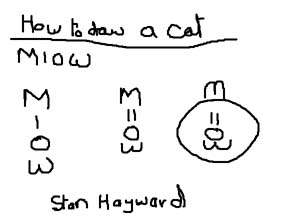Being Funny
"The characteristics of a feminine face imply that the person may be agreeable and co-operative, which can be causal in our first impressions of comedians as being friendly and funny."
Dr Little used computer software to blend together 179 different facial aspects of 20 top comedians, resulting in the "perfect comedy face".
And picked Ricky Gervais as having the perfect comedy face - so that proves it.
Find out more at: "http://www.itv.com/news/entertainment_0e6a2a3f4a4578cb05bb63d81a59b4f7.html
I would like to see the system applied to Politicians, and a few others who we might put our trust in.
A recent study regarding 'Prejudices and what we look like' can be found at http://www.badscience.net/?p=219. It supports the obvious in that we are attracted to beautiful people, but that is partly because - as those of us in the movie business know - the good are beautiful and the bad are ugly. Disney made a mint out of it; and anyone working in the Animation industry is aware that a Cartoon's face is its fortune.
The constant reinforcement of what is Good and Bad stemming from the worlds of advertising, movies, and fashion may be conditioning our brains in a way that Religion did in history.
If computer games are making children violent then animation has a lot to answer for. On the other hand, if animation can define the 'Perfect Comedy Face' then perhaps there is a 'Perfect Tragedy Face', or a perfect face for any attribute you can think of.
It would certainly be handy for checking passport photos, Internet dating photos, and personal photos for our CV, but I can see the possibility of plastic surgery opening up new fields of expertise with body parts as yet unexplored.
Stan
Labels: Computers, Games, Movies, Psychology, Science







